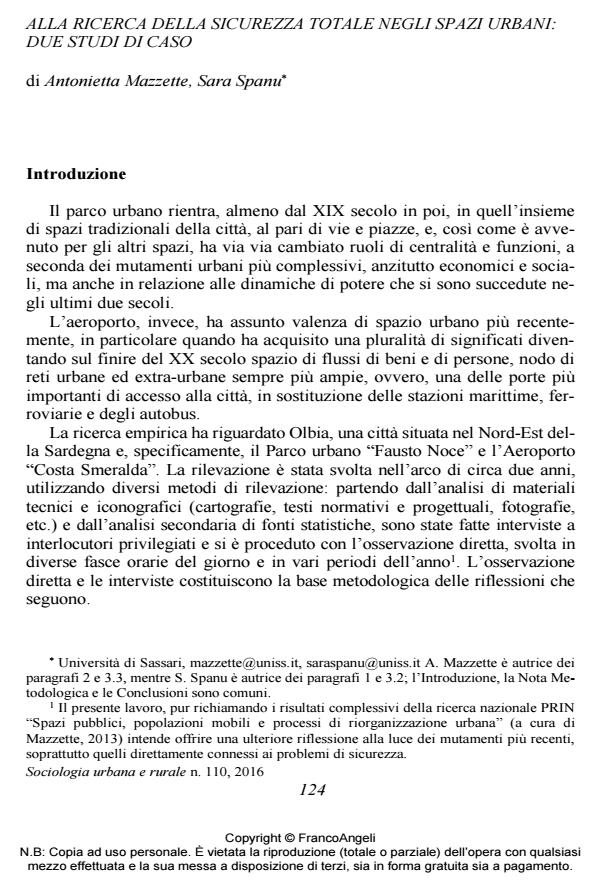Seeking total security in urban spaces: two case studies
Journal title SOCIOLOGIA URBANA E RURALE
Author/s Antonietta Mazzette, Sara Spanu
Publishing Year 2016 Issue 2016/110
Language Italian Pages 22 P. 124-145 File size 791 KB
DOI 10.3280/SUR2016-110009
DOI is like a bar code for intellectual property: to have more infomation
click here
Below, you can see the article first page
If you want to buy this article in PDF format, you can do it, following the instructions to buy download credits

FrancoAngeli is member of Publishers International Linking Association, Inc (PILA), a not-for-profit association which run the CrossRef service enabling links to and from online scholarly content.
The urban park represents a traditional area of the city, whereas the airport has only recently gained influence as urban space due to its variety of meanings. Both a traditional place and a new urban space highlight four aspects that refer to the city as a whole which is marked by: 1) a growing privatization of spaces and functions; 2) the pervasiveness of consumption as fundamental practice of social action; 3) multiple though increasingly provisional relationships; 4) a growing social need for safety.
Keywords: Safety, control, park, urban spaces, airport, Olbia.
Antonietta Mazzette, Sara Spanu, Alla ricerca della sicurezza totale negli spazi urbani: due studi di caso in "SOCIOLOGIA URBANA E RURALE" 110/2016, pp 124-145, DOI: 10.3280/SUR2016-110009